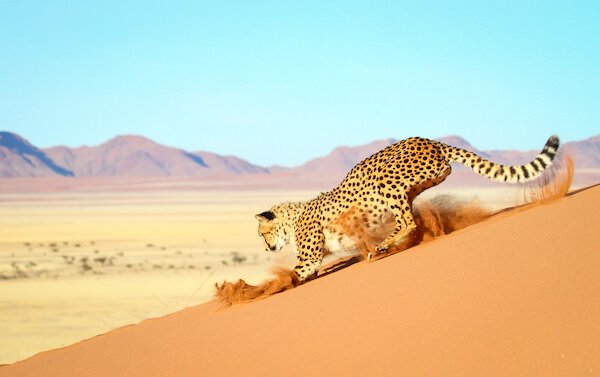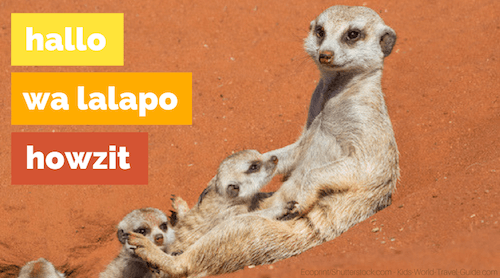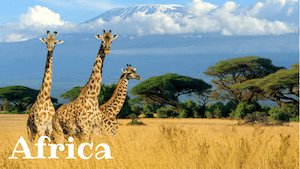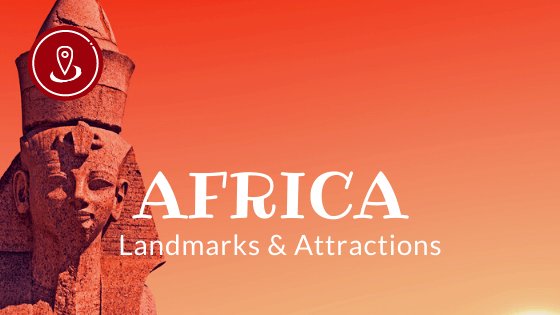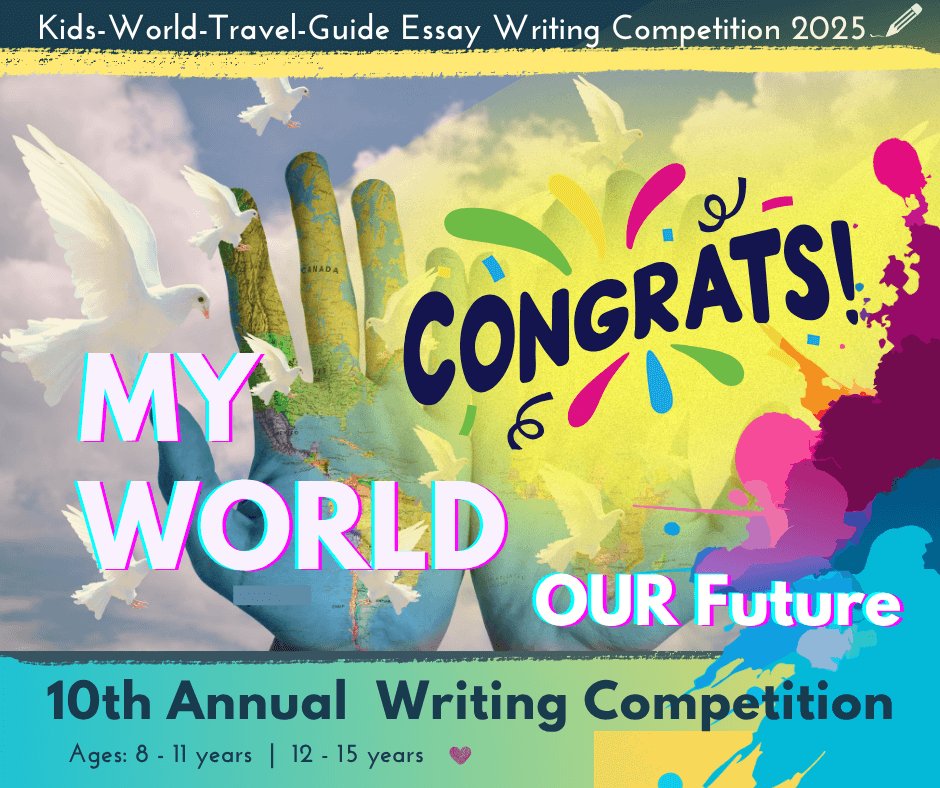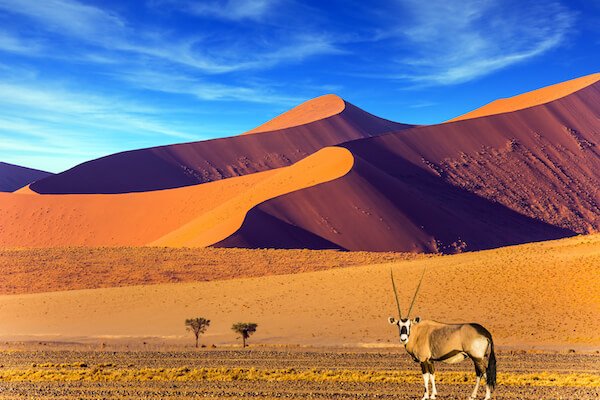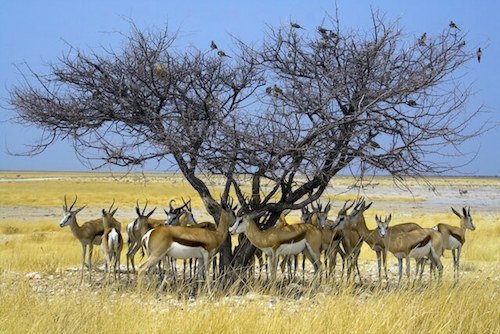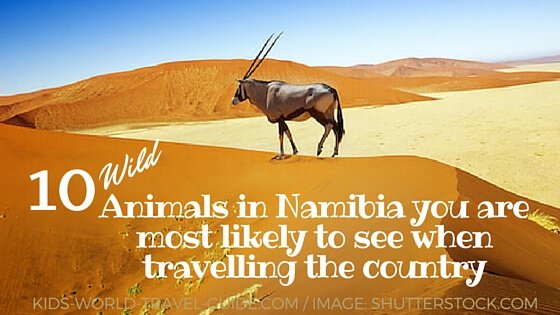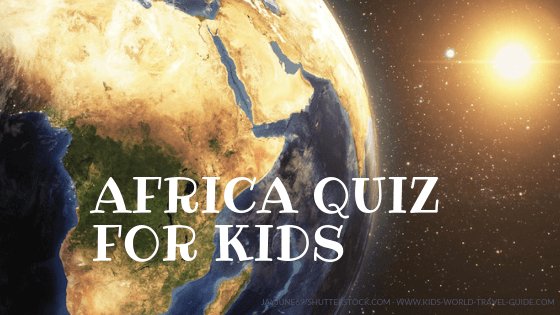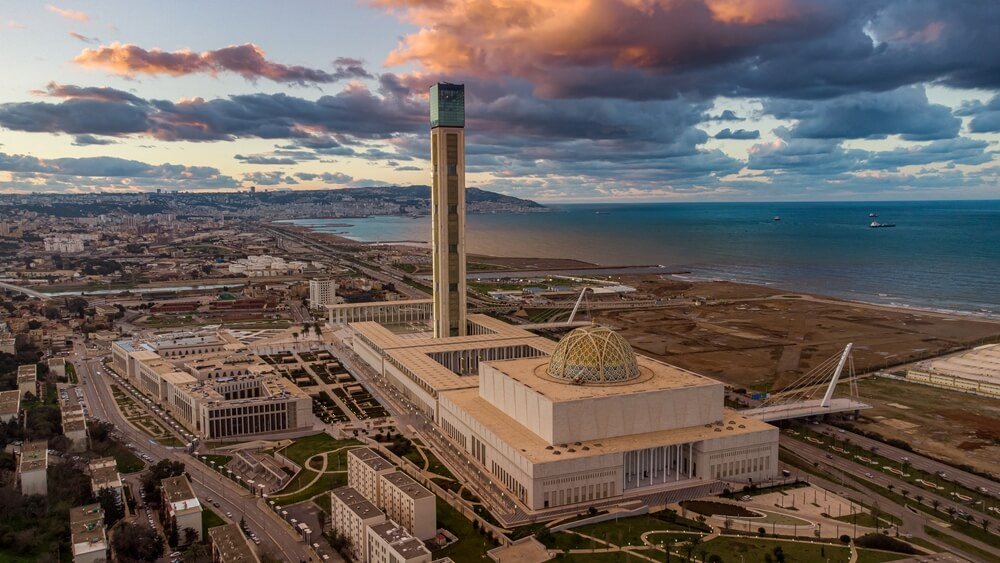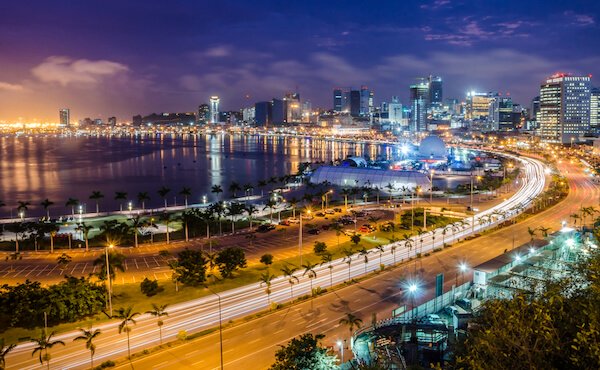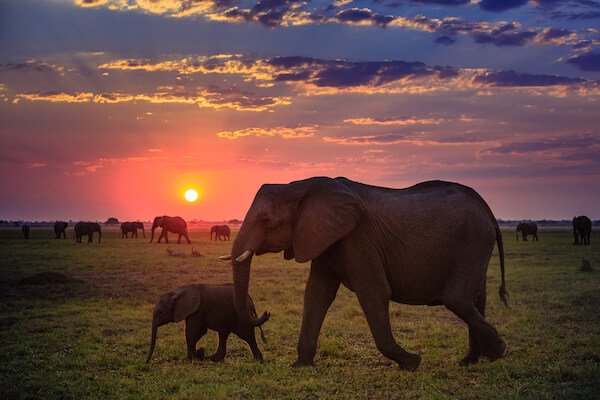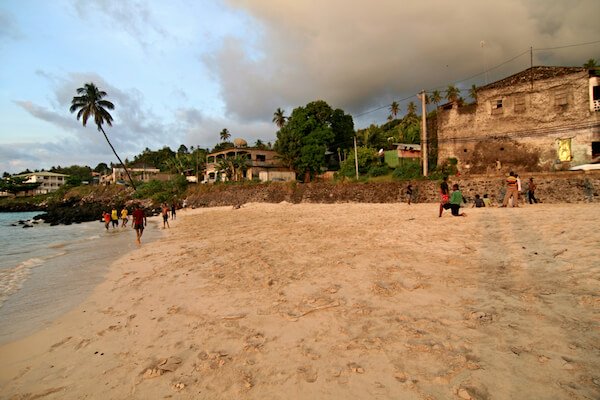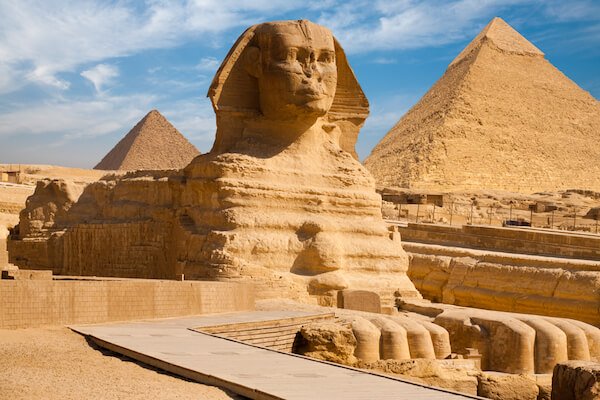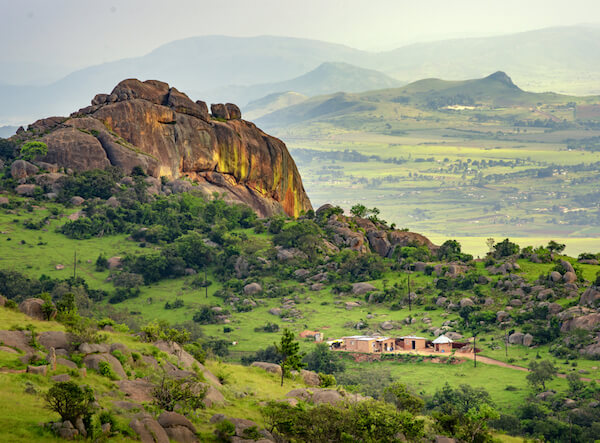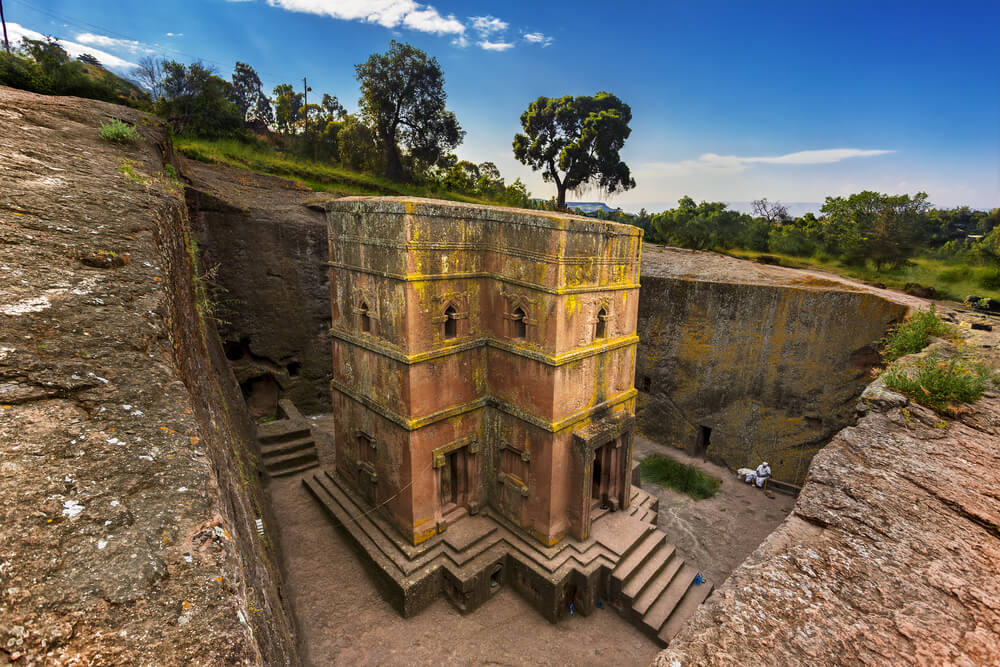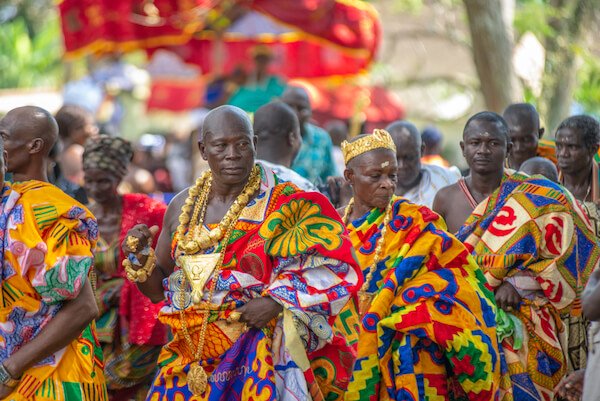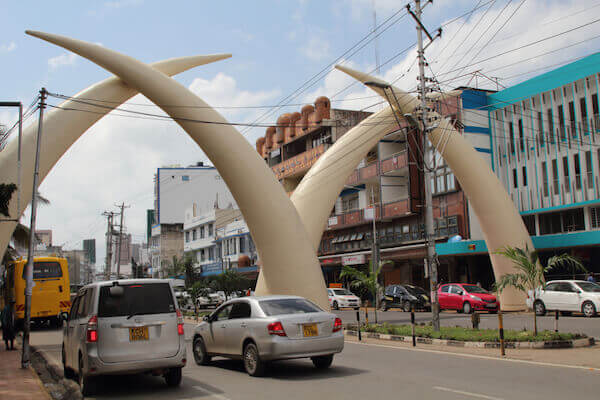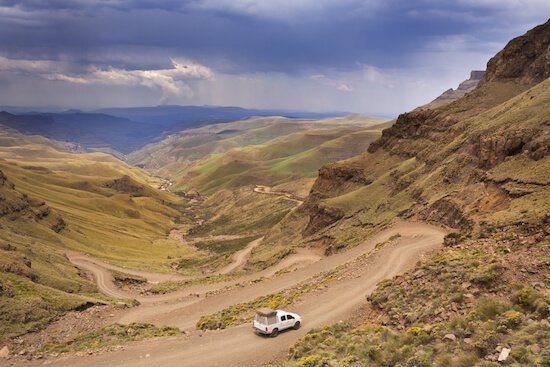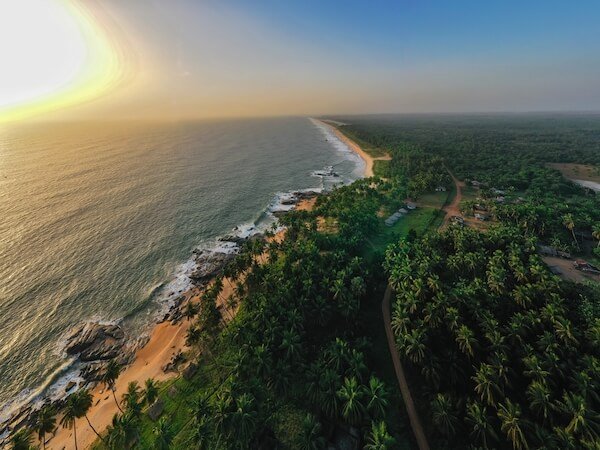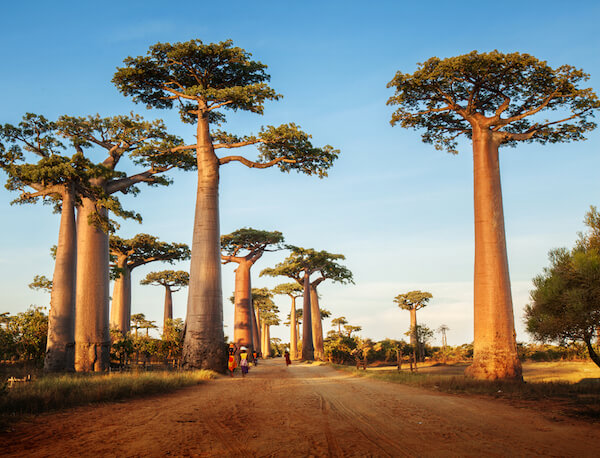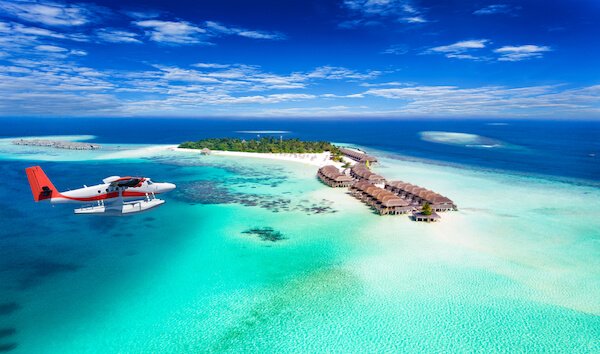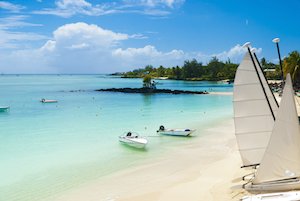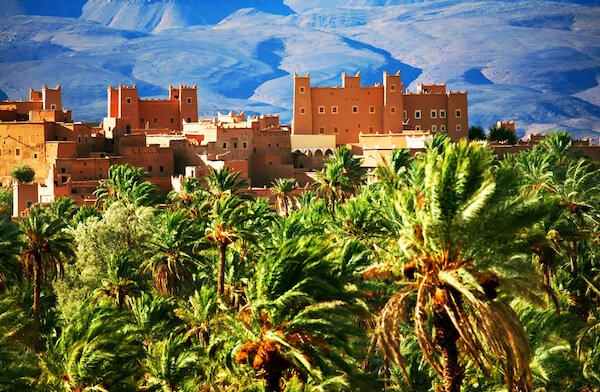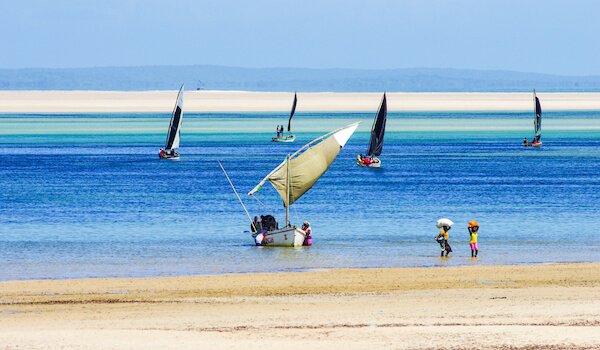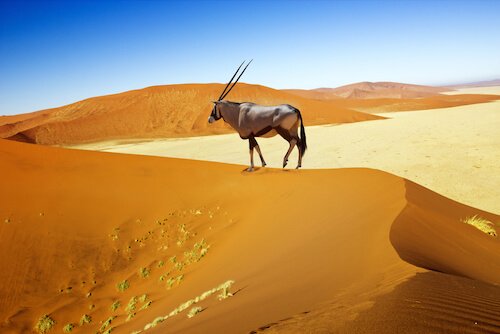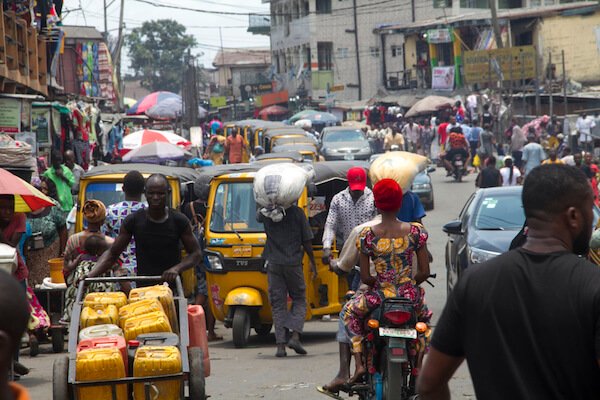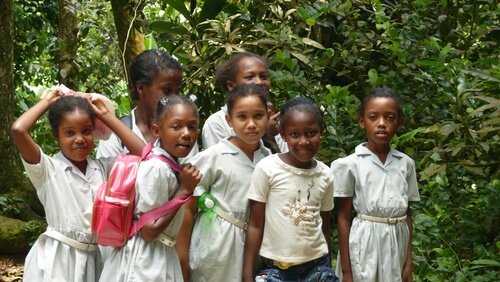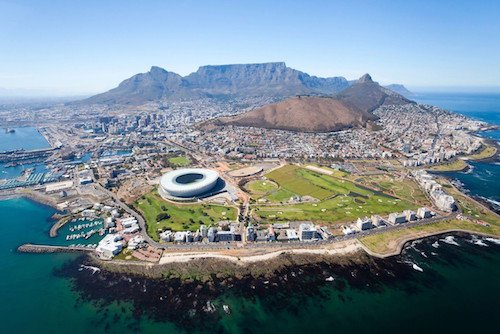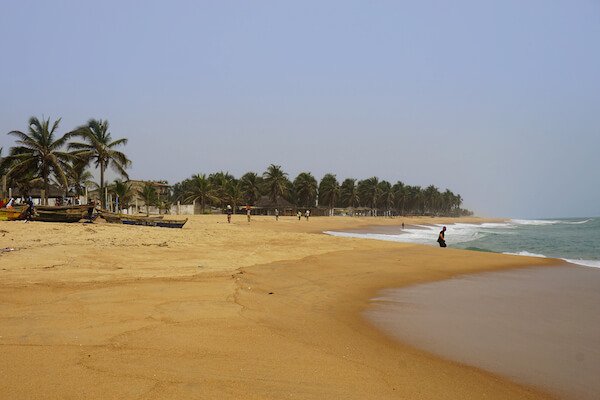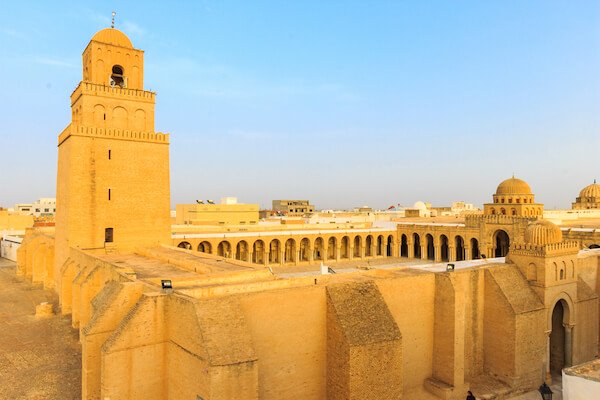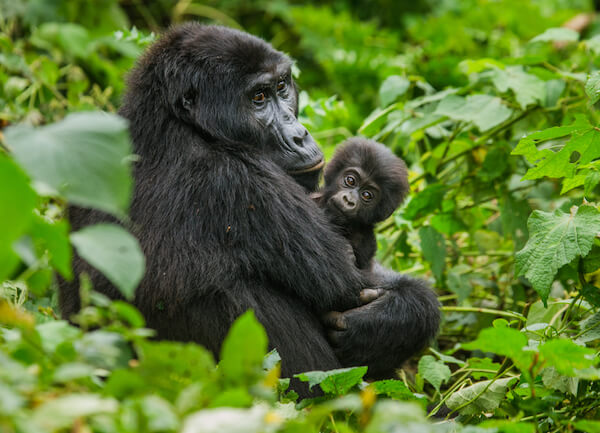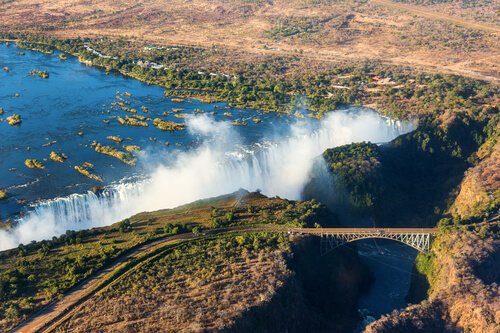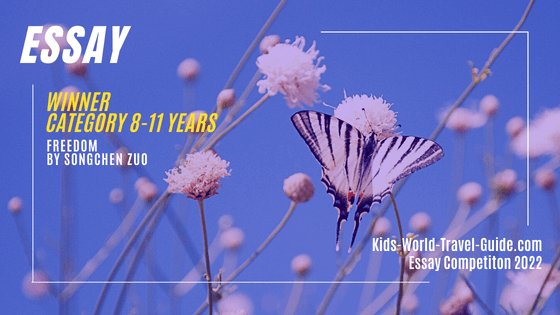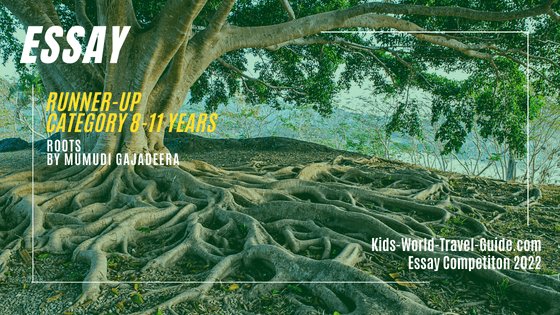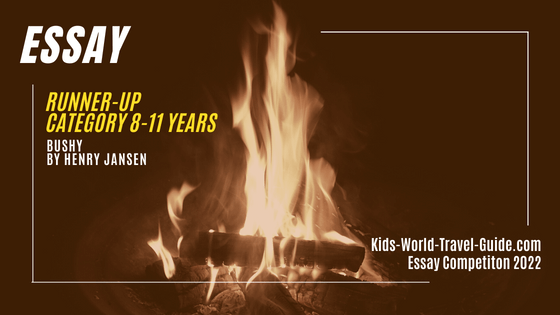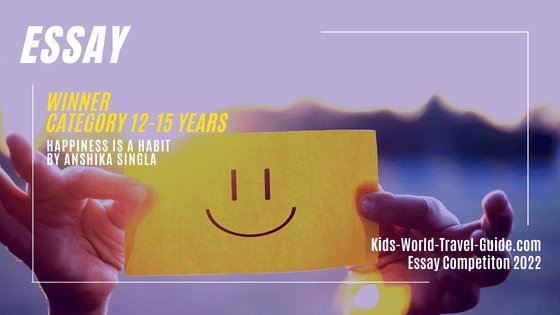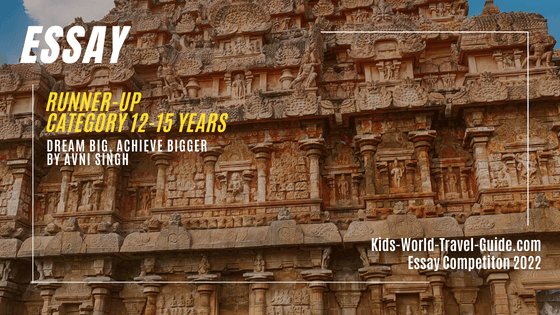Namibia for Kids
Namibia for Kids | Last update: 19 January 2023
These facts about Namibia were chosen and researched to provide more insights into this beautiful country and tell you some amazing country facts pupils will learn at school.
Fun Facts about Namibia for Kids
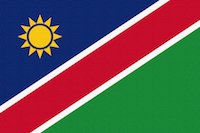
Namibia is a country bordering the Atlantic Ocean in southern Africa.
Namibia shares borders with four countries: Angola to the north, with Zambia and Botswana to the east and with South Africa to the south and south east.
The country is the second least densely populated country in the world - after Mongolia. With a population of less than three million inhabitants living on an area twice the size of California/USA, the country has vast areas and the landscape is dominated by deserts and bushland.
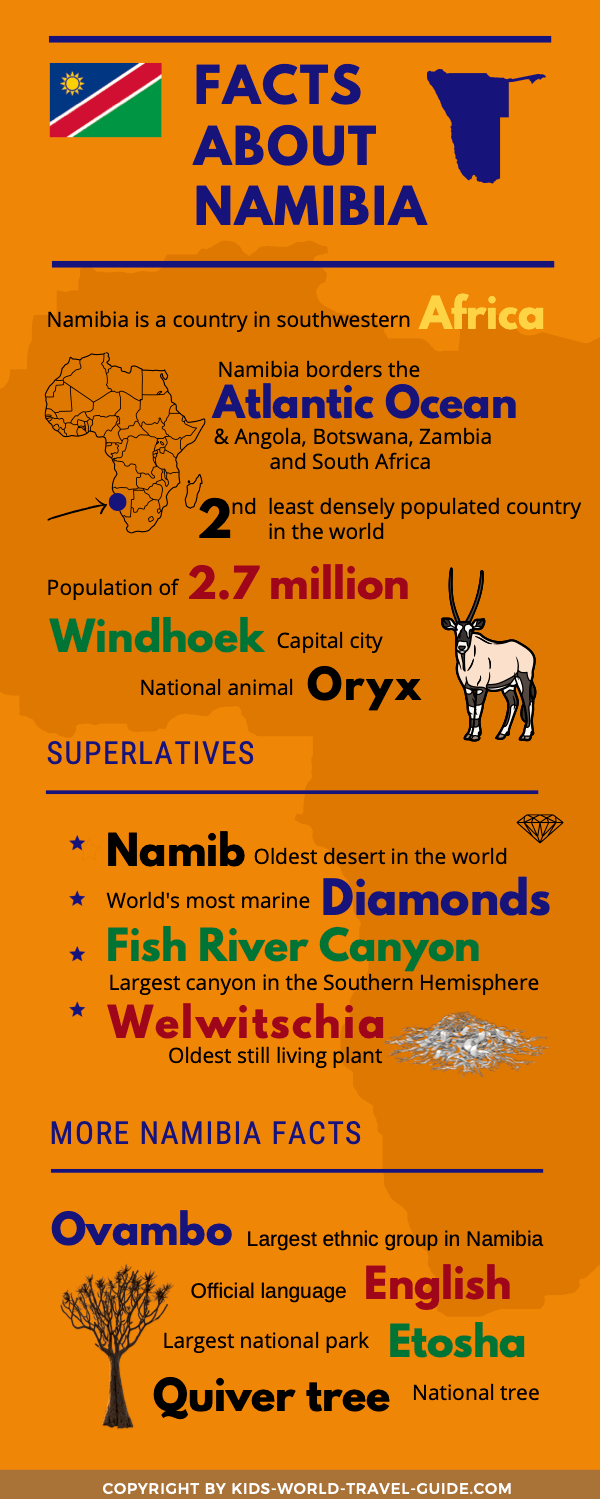
Namibia for Kids: Namibia is roughly half the size of Alaska or double the size of California!
Facts about Namibia for Kids
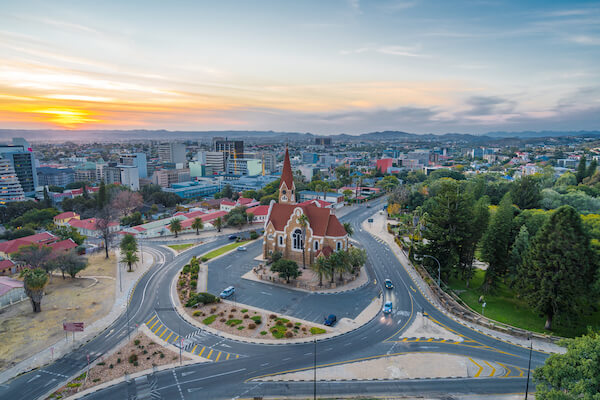
|
The capital city of Namibia is called Windhoek. |
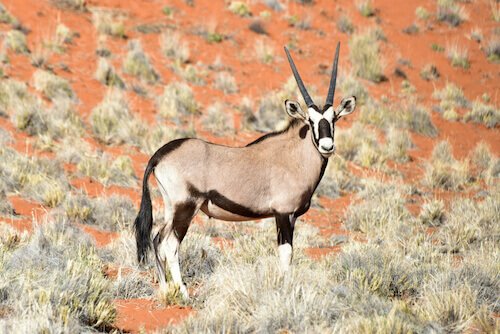
|
The national animal of Namibia is the Oryx, also called Gemsbok. |
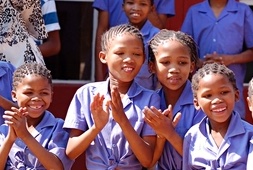
|
The largest ethnic group are the Ovambo people. |
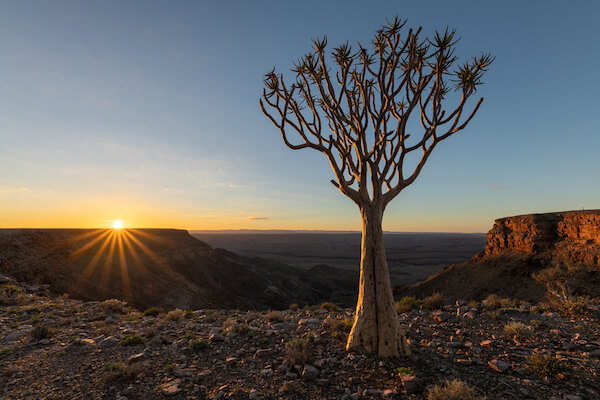
|
The national animal is the Quiver tree, also called Kokerboom. |
Namibia Superlatives
The Namib Desert
- Namibia for Kids -
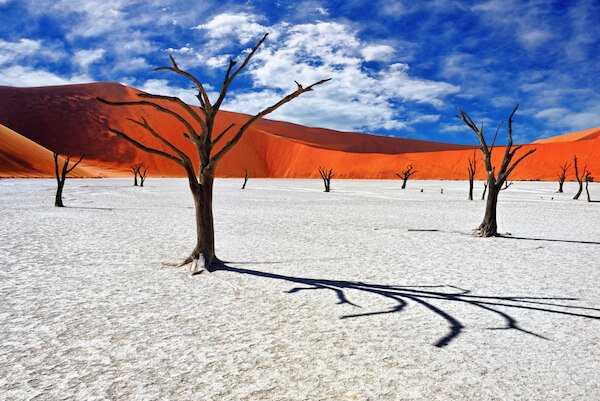 Namib desert
Namib desertThe oldest desert in the world is the Namib desert.
The Namib is a coastal desert with huge dunes along the Atlantic Ocean and thus stretching along of the western part of Namibia.
Namib means vast place and a vast place it is!
The Welwitschia plant
- Namibia for Kids -
In the Namib desert, there is a tough plant that can live over 1,000 years: The Welwitschia. This plant is referred to as a living fossil.
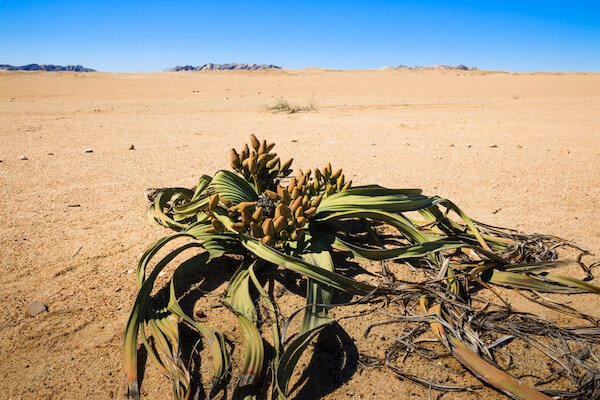 Welwitschia plant
Welwitschia plantFish River Canyon
- Namibia for Kids -
The Fish River Canyon is the second largest canyon in the world and the largest in the Southern Hemisphere.
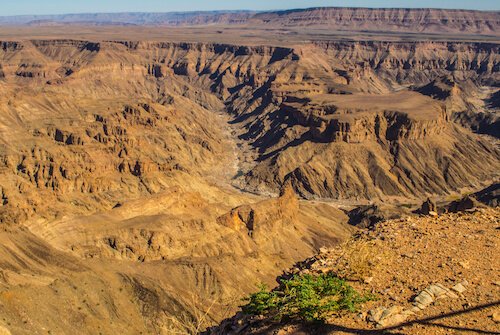 Fish River Canyon by Alta Pretorius
Fish River Canyon by Alta PretoriusThe Fish River is the longest river in Namibia and runs over 800 km/ 497 miles. The Fish River Canyon itself is about 161 km/ 100 miles long, 27 km/ 16 miles wide and up to 549 m/ 1,800 ft deep.
Etosha National Park
- Namibia for Kids -
One of the most popular attractions on the African continent and the most popular tourist attraction in Namibia is the Etosha National Park in the north of the country.
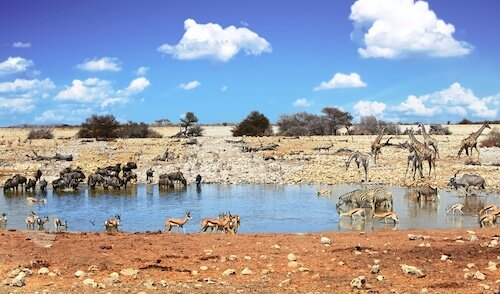 Etosha National Park - image by Paula French
Etosha National Park - image by Paula FrenchEvery second tourist to Namibia visits this part of the country to view game and birdlife at this national park.
Etosha is famous for its large salt white pan that can be seen from space!
Actually, Etosha means 'great white place' in the Ovambo language.
The pan formed about 100 million years ago and and covers large parts of the national park.
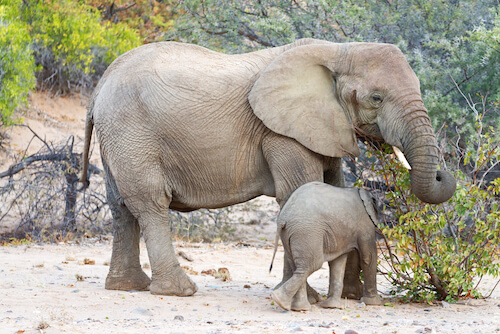 African elephants in Namibia
African elephants in NamibiaIn Etosha wildlife is abundant and animals can be seen around the many waterholes.
There are of course: elephants, giraffes, antelopes and lions, but also the rarer black rhinos and leopards can be spotted.
More than 340 bird species live in the park.
Namibia has Diamonds galore!
- Namibia for Kids -
Namibia has the largest deposits of marine diamonds in the world. A new diamond rush will make Namibia’s coastline the centre of exploitation.
Diamonds are said to be "scattered in the seabed just like lost change". Mining companies extracted diamonds with huge vacuum hoses from the sea floor.
Only about 3% of the Namibian seafloor has been explored so far.
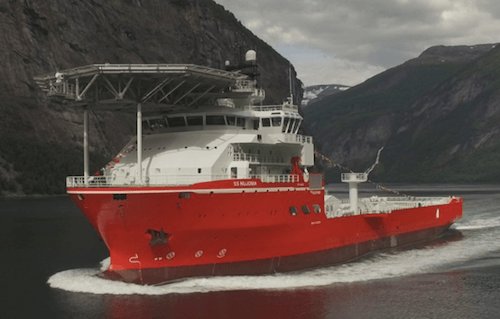 Diamond ship 'Nujoma'
Diamond ship 'Nujoma'In 2017, DeBeers, the largest diamond producer, launched the world’s biggest diamond exploration ship. This vessel harvests more than 1.2 million carats of diamonds every year!
Most diamonds found in Namibia are 1-2 carats, this means about one million diamonds are found every year!
A diamond of 7 carat as was recently found is very rare and would cost between US$100,000 and 1 million US$, depending on quality.
Dragon's Breath Cave
- Namibia for Kids -
The largest underground lake in the world can be found in Namibia. The entry to the lake is through Dragon’s Breath Cave near Grootfontein in northern Namibia.
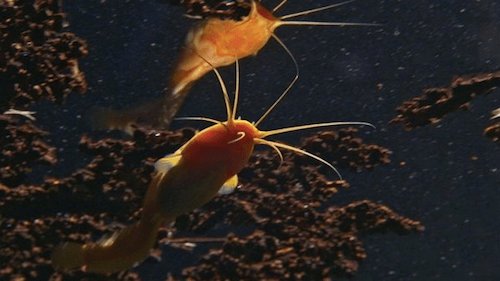 Golden Catfish in Namibia's underground lake
Golden Catfish in Namibia's underground lakeThe lake is around 100 m/ 330 ft beneath the ground and only rarely climbers and divers explore the cave as the access to the underground lake is difficult.
Only White Shrimps and worms live in the crystal-clear water of the lake and the Golden Cave Catfish which only live here.
Orange River Valley
- Namibia for Kids -
Last but not least of our facts about Namibia: The southern African country is also know for the largest harvest of table grapes and one of the biggest wine growing areas in the Southern Hemisphere.
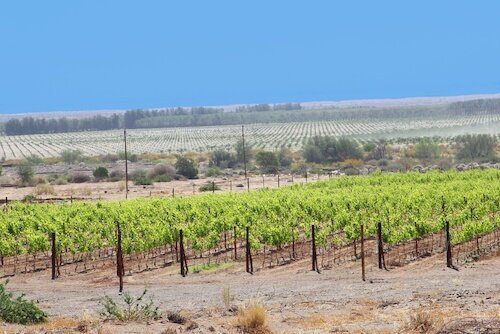 Vineyards in Namibia produce mainly table grapes
Vineyards in Namibia produce mainly table grapesThe climate in the region along the Orange River in the south of the country is ideal for growing grapes.
The dry desert climate is good for the vines as it rarely rains and the climate is hot so less pests can survive the heat and destroy the plants. However, the heat and dust is hard for the farmers and helpers working in the vineyards.
Do you want to read about more great Namibia Geo Superlatives?
Find more great Namibia superlatives on our special page here: Namibia Geography Superlatives.
Or are you looking for more fun Namibia Facts for Kids?
Some Namibian History
- The country’s name Namibia originates from the desertwhich is known as the Namib desert - the oldest desert in the world. Namibian activist and former politician Mburumba Kerina named the country 'Republic of Namib' which then became Namibia or Republic of Namibia.
- The country also was known as German South-West Africaor in German 'Südwestafrika'. From 1884 - 1915 it was a colony of the German Empire.
- Then the country was renamed into South West Africa in 1915 as during the First World War (1914 - 1918) the country was invaded by its neighbouring country South Africa and also was made South Africa’s fifth province in 1949. The country which during the first World War had been put under the League of Nations mandate and then after the Second World War under United Nations supervisory role, was nevertheless controlled by the apartheid regime of South Africa until the country’s independence in 1990
- Since 1990, the country is referred to as Republic of Namibia
Popular Pages
Fun Intro Video about Namibia
Further Resources
- Paganel Studio. "Namibia 2016." Paganel.tv. (amazing landscape views, animals (and their babies), cultural traditions of the Himba and San people and awesome desert images. With aerial shots to understand the country’s vastness and uniqueness. Last accessed 19 January 2023
- Namibia Tourism. "Etosha National Park." Namibia Etosha National Park Info. Last accessed 19 January 2023
- Kevin Sieff. "A New Frontier for Diamond Mining: The Ocean". Washington Post. 1 July 2017. Last accessed 19 January 2023
Namibia for kids - first uploaded as facts about Namibia on 01 October 2017 - last edited and updated on 19 January 2023
Image Credits: Shutterstock.com, freeimages.com, canva.com as well as own images if not otherwise mentioned.
Back from Namibia for Kids to Kids World Travel Guide Homepage
More Countries in Africa
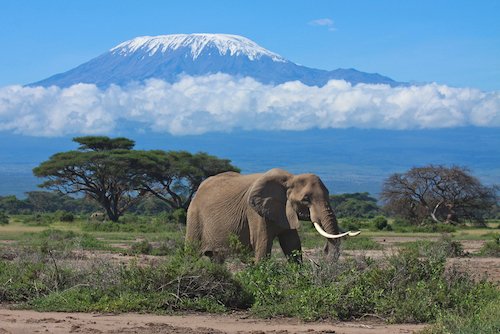 Tanzania
Tanzania